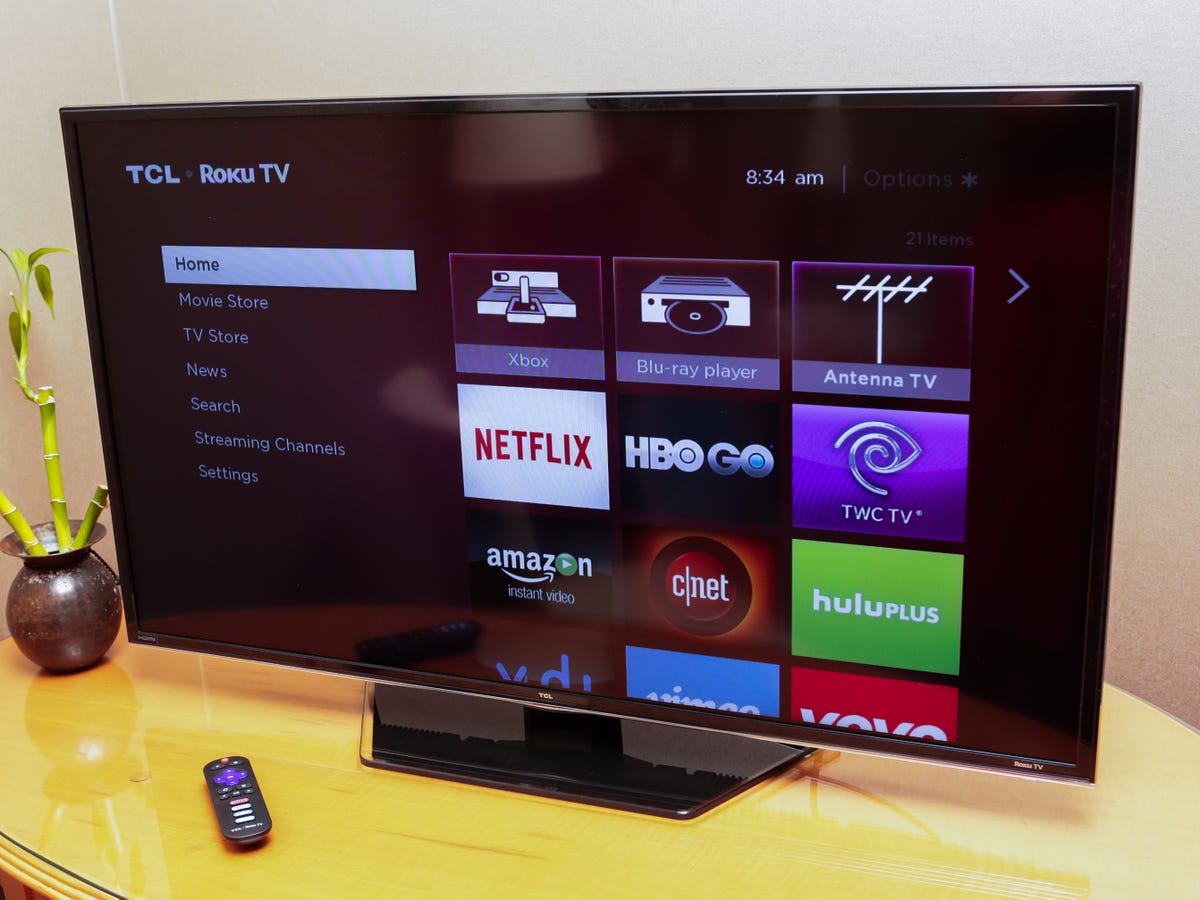
Sarah Tew/CNET
When we first got a look at the Roku TV earlier this year, we were stoked.
It promised to build our Editors’ Choice streaming device right into the TV, delivering more apps, more frequent updates and an easier-to-use interface than Smart TVs from the likes of Samsung, LG and Vizio.
What we didn’t anticipate was how affordable they’d be.
Roku has announced that the first wave of Roku TVs, manufactured by China’s TCL, is available for pre-order now at Amazon, and its pricing threatens to turn the smart TV world on its ear.
The TCL Roku TVs come in four sizes. For now, the Roku TVs are available only in the US. The 32-incher is $229 (converted about £140, AU$250), the 40-incher $329 (about £200, AU$355), the 48-incher $499 (about £300, AU$540) and the 55-incher $649 (about £390, AU$700).
Roku TVs by Hisense and TCL (pictures)






Cheap and smart
TCL’s pricing undercuts well-known smart TV brands significantly. For example Vizio’s E series , that company’s least-expensive mainstream Smart TV models, cost between 4 and 21 percent more depending on size.
Here’s a comparison between Vizio’s E-series models and the TCL/Roku TVs, using Amazon’s current pricing for each.
| Size | Vizio model | Vizio price | TCL/Roku model | TCL/Roku price | Savings |
|---|---|---|---|---|---|
| 32-inch | E320i-B2 | $259.00 | 32FS4610R | $229.99 | $29.01 |
| 40-inch | E400i-B2 | $398.00 | 40FS4610R | $329.99 | $68.01 |
| 48-inch | E480i-B2 | $518.00 | 48FS4610R | $499.99 | $18.01 |
| 55-inch | E550i-B2 | $679.99 | 55FS4610R | $649.99 | $30.00 |
Related Stories
- Will Roku bring smart TVs into the cool crowd?
- Roku 3 review
- TCL LE58FHDE3010 review
- Roku TV unveiled (CES 2014)
- Roku vs. Apple TV vs. Chromecast vs. Amazon Fire TV
The 32-inch size in particular is very aggressive. The current best-selling TV at Amazon, a 32-inch non-Smart Toshiba, is just $12 less than the 32-inch TCL Roku TV.
TCL has a reputation for making some of the least-expensive TVs on the market, but despite being the number one brand in China and number three worldwide (after Samsung and LG), it struggles with brand recognition in the United States. Roku’s brand is increasingly well-known and well-liked here, providing an obvious boost by association to a company like TCL, which few Americans know about. To reflect the partnership, the Roku and TCL logos all match in size.
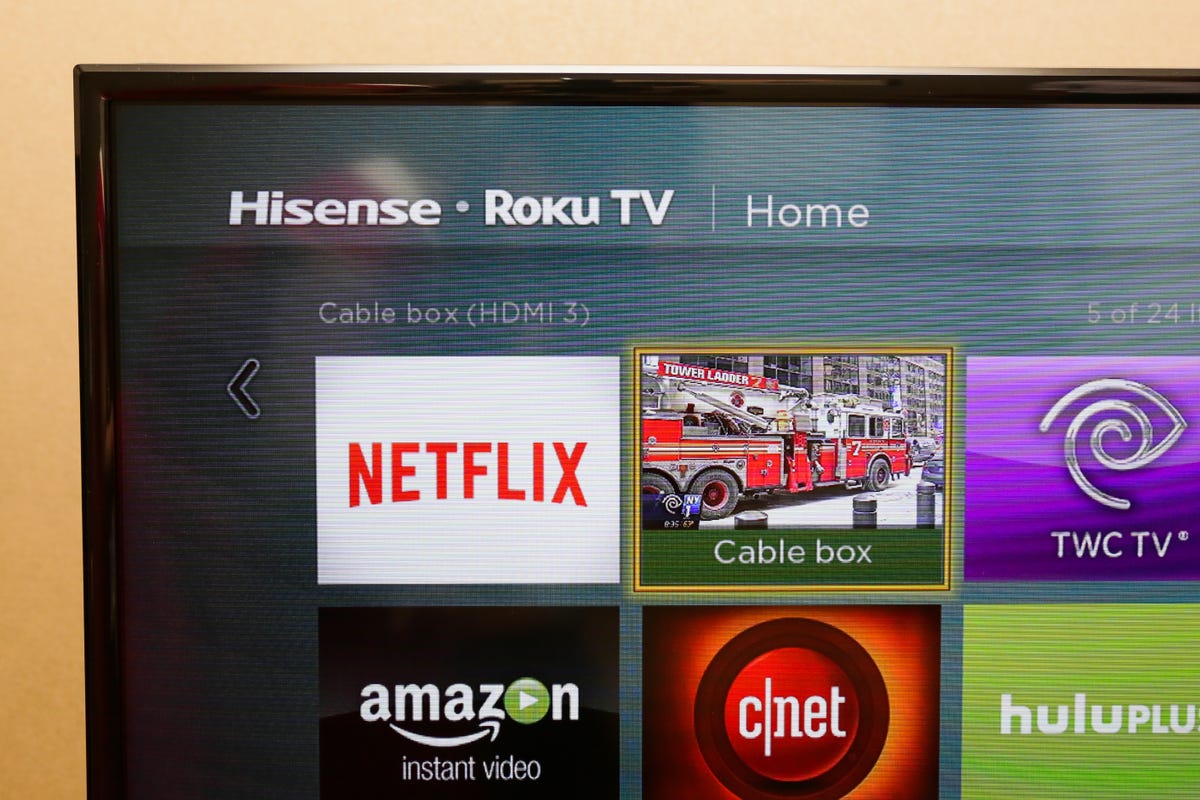

Sarah Tew/CNET
Roku is also partnering with Hisense, the number-two TV brand in China. Available in four sizes, 40, 48, 50 and 55 inches, its “H4 Series” Roku TV sets won’t be available until late September, and pricing was not announced.
It’s Roku, in a TV
We got the chance to play with near-final versions of the TCL and Hisense Roku TVs at an event in New York last week, and they indeed fulfill the promise of a tightly integrated TV-and-Roku experience.
When you first turn on the TV, you’re greeted by a home screen largely identical to that found on current Roku boxes with the familiar grid-style arrangement of app tiles. If you want to go straight to the last-used input upon power-up, like on a regular TV, you have that option too.
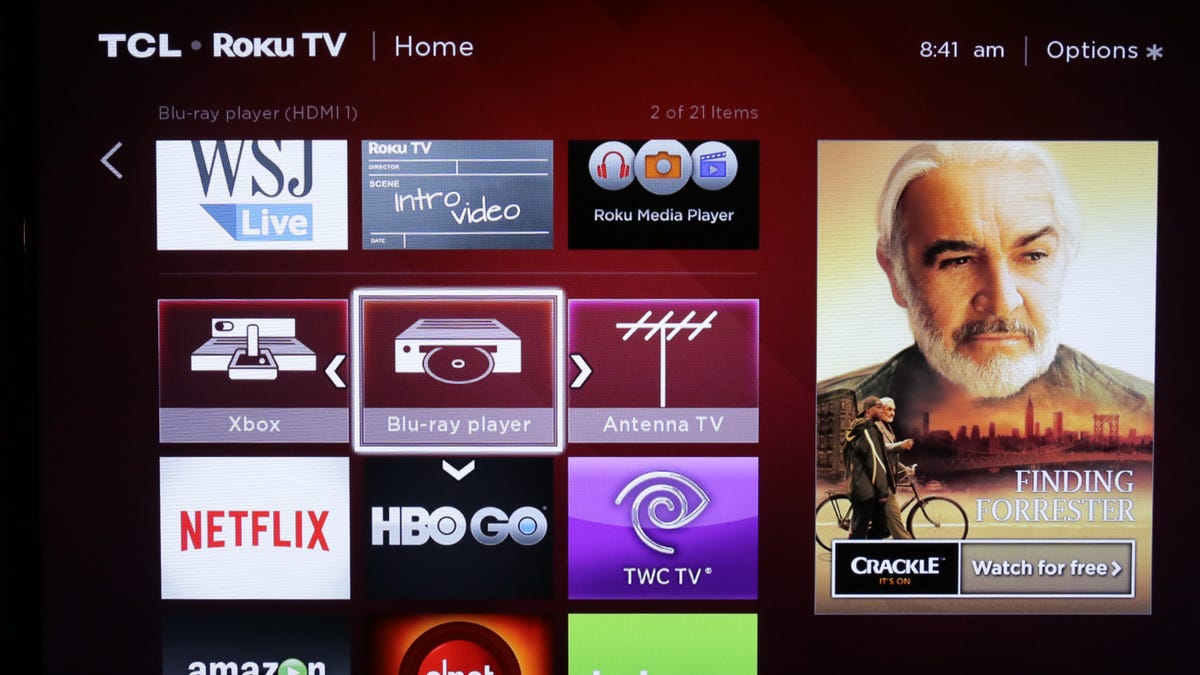

Sarah Tew/CNET
Roku TV also betters the input-selection experience. By default, the top row of icons consists of input devices, namely “cable box,” “antenna TV,” “Xbox,” “Blu-ray player,” etc. During initial set-up you’re asked to choose the name of the device, or you can select it later, although you can’t type in custom names. Even so, the arrangement is better than names like “HDMI 1” used by most TV by default. I also liked that the input icons show live-action previews of what’s playing now on those inputs.
Roku’s software runs every aspect of the TV, so even the picture adjustment menus and esoteric settings like sleep timer have a consistent look. Unfortunately the models we checked out didn’t have as extensive picture controls as some other sets, including Vizio’s.
Although they do have some differences in specifications, detailed below, the only visible difference between the Hisense and TCL TVs is their respective brand IDs and the background color (reddish-pink for TCL, bluish-green for Hisense). The remote controls also differ slightly; the TCL has a matte finish and volume rocker on the side, while the Hisense clicker is glossy with top-facing volume buttons.
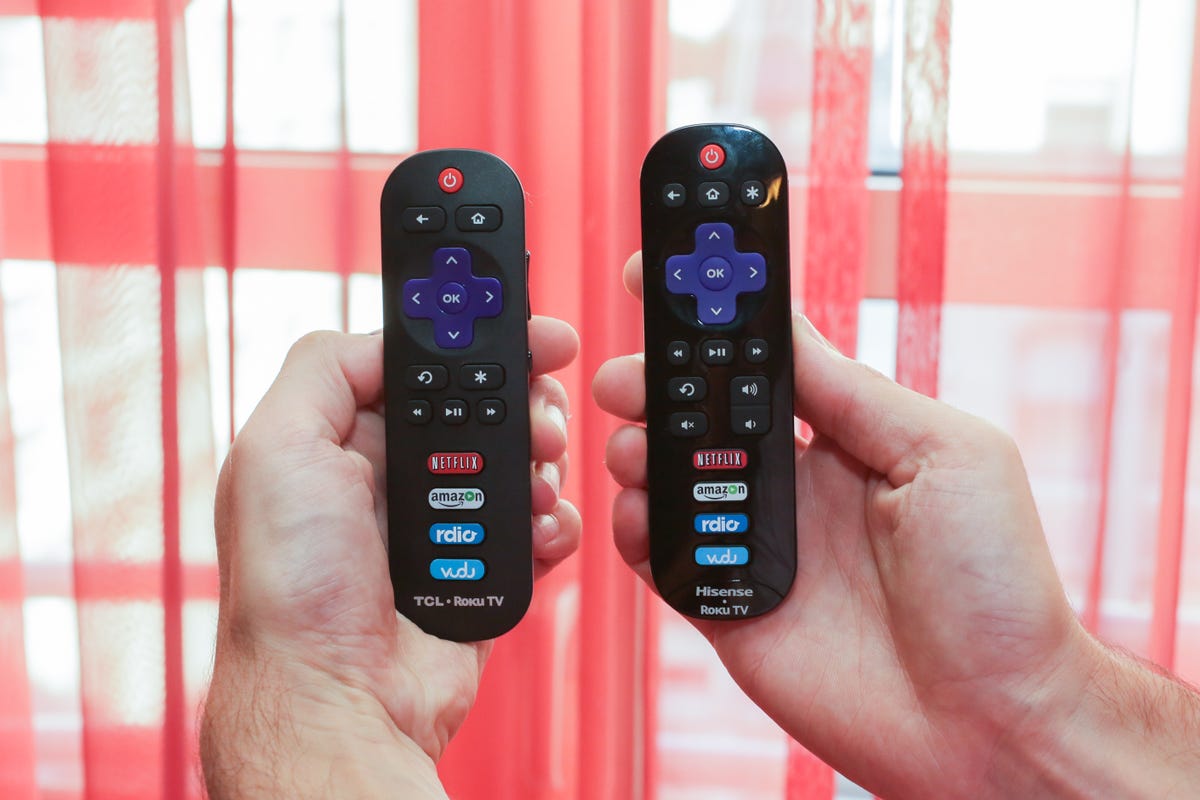

Sarah Tew/CNET
And yes, they look and feel just like Roku remotes: small, dead simple, minus numeric keypads (instead, the Roku TV has a built-in on-screen list just for over-the-air channels) and other buttons found on standard TV remotes, and replete with a few app shortcut keys. The clickers lack the headphone jack and Wi-Fi communication of higher-end Roku remotes, but they’re just as appealingly simple.
Otherwise the experience is straight Roku. You can add channels from the Channel Store, move the tile icons (including the input tiles) anywhere within the grid, and fire up apps as easily as switching inputs. Response times were speedy in our demo, and in general the TV behaved just like a Roku 3.
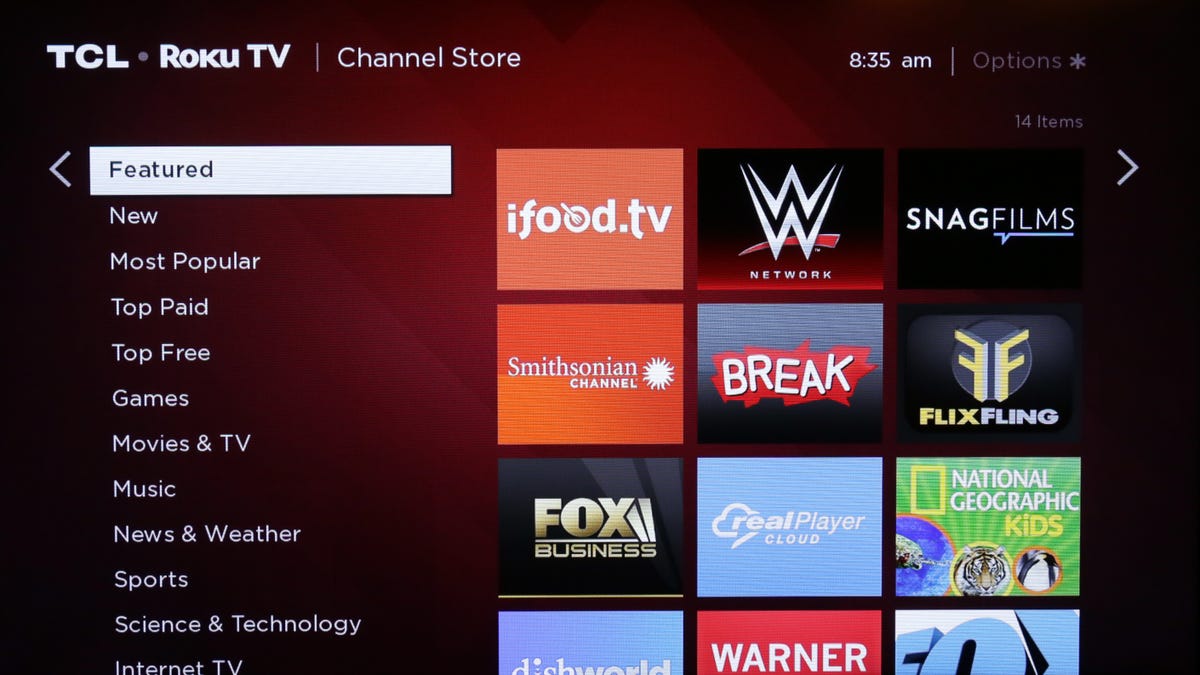

Sarah Tew/CNET
And that’s the real appeal of these sets. Roku offers more apps than any other platform and the best cross-platform search in the business. No other smart TV aside from Samsung’s gets HBO Go, for example, and even Samsung is missing stuff Roku has, including Showtime Anytime, Rdio and NFL Now. And Roku’s search hits Netflix, Hulu Plus, Amazon Instant, HBO Go, Vudu, Crackle, M-Go, RedBox Instant, TWC and more. Search does not hit your local TV listings, however.
In addition Roku usually gets updated app versions before the other guys, and it has a history of keeping its hardware updated years after release. Smart TV makers rarely update anything a year or two after release.
These advantages Roku’s platform are part of the reason we recommend standalone boxes over integrated smart TVs.
But what about picture quality?
We’ve never reviewed a Hisense TV, but we have reviewed three TCLs, most recently the LE58FHDE3010 and L40FHDP60 . Their picture quality didn’t blow us away, but it wasn’t terrible either, both scoring 6 out of 10 in our system — a score matched by many a Samsung, Sharp and Sony LCD TV.
Going back to Vizio for a moment, however, its E series scored 8 out of 10 in picture quality, in part due to the excellent implementation of local dimming.
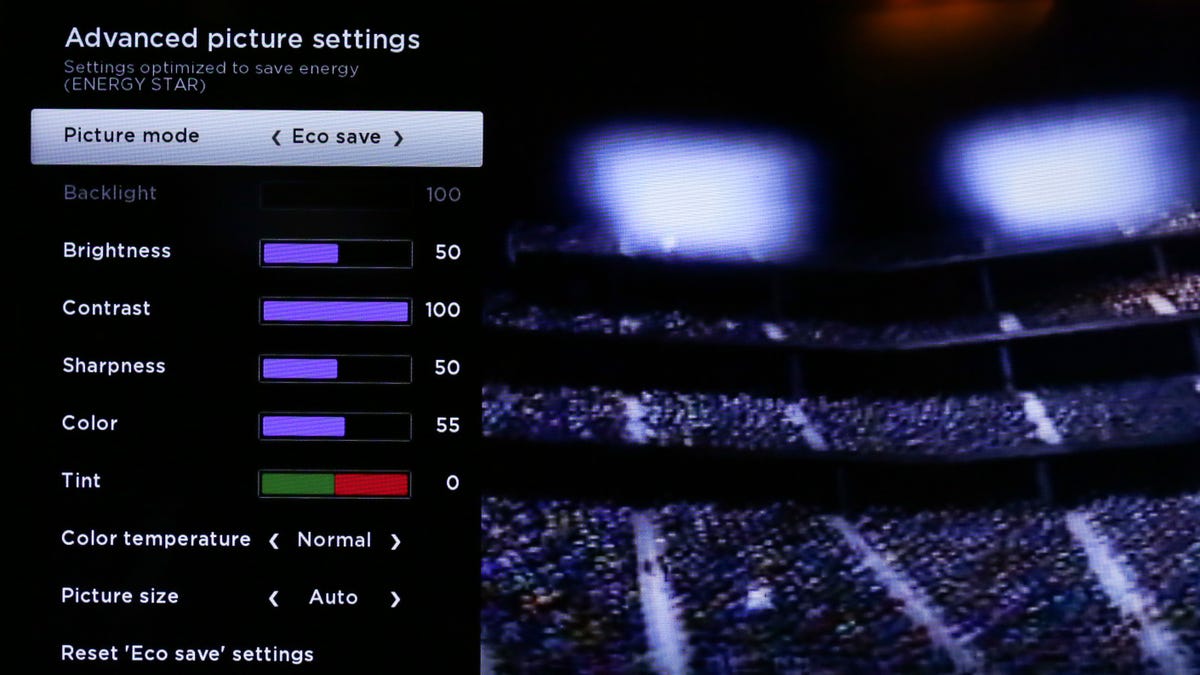

Sarah Tew/CNET
The TCL sets don’t have local dimming, and in every way seem like bare-bones LED LCDs. The three larger sizes do have so-called 120Hz refresh rates (they’re 60Hz panels that use backlight scanning) and 1080p resolution, as well as three HDMI inputs, a USB port and an optical digital audio output. The 32-incher is a standard 60Hz set with 720p (1366×768) resolution and a couple of other somewhat reduced specs, like a lower contrast ratio.
The Hisense TVs do offer local dimming in all four sizes, so perhaps they’ll deliver better picture quality–although we won’t know for sure until we can test one. The 50- and 55-inch sizes get “true” 120Hz refresh rates complete with smoothing, while the 40- and 48-inch sizes are 60Hz sets. Connectivity, according to Hisense’s press release, also includes three HDMI inputs a USB port and an optical digital audio output.
Can Roku succeed outside the box?
Despite their aggressive pricing, the Roku TVs still cost a lot more than a $99 box or $49 stick. And the fact that you can add one of those devices to any TV, combining Roku’s great platform with potentially superb picture quality, potentially limits the appeal of a TV with the platform built-in.
On the other hand that extra box or stick and additional remote, might be less convenient than an all-in-one solution, especially for smaller TVs and secondary rooms. The one-device nature of Roku TV makes using Roku simpler than ever.
Roku and TCL say they’ll send us review samples shortly, and I expect the same from Hisense when they become available. Stay tuned for our in-depth reviews.


Now playing:
Watch this:
Roku TV hands-on: A simpler take on Smart TV
3:13




